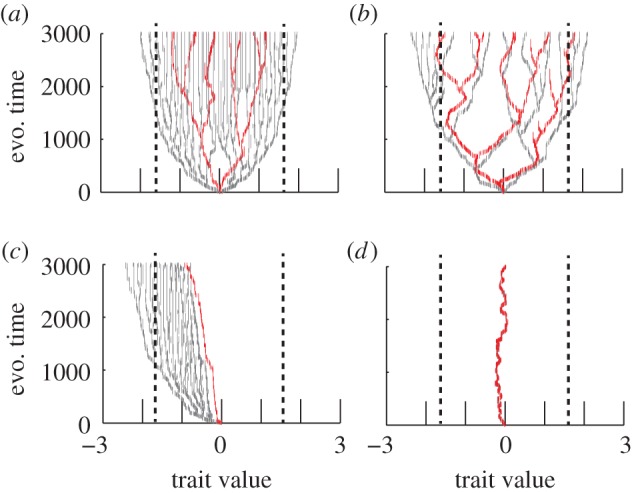Figure 5.

Predator–prey adaptive radiations across parameter space. Co-radiation at intermediate predator niche width (σa = 0.3), low predator mutation probability (μpred = 0.005) and low (a) and high (b) predator efficiency (bmax = 0.0001 (a) and 0.0005 (b)). (c) Predators excluding the prey from parts of trait space when the predator's efficiency is large (bmax = 0.0007), niche width is low (e.g. σa < 0.1) and mutation probability is low (μpred = 0.005). (d) High values of predator mutation probability (μpred = 0.1), in combination with high predator efficiency (bmax = 0.0007) interrupts the branching all together, only one predator and one prey population co-evolve in trait space with the predator trait (red) completely overlapping the prey (grey, barely seen). Insert in (d) illustrates the reference prey adaptive radiation showing that the width of the resource distribution tends to be less wide compared to predator–prey radiations. All the results presented are based on radiations with low prey niche width (σα = 0.1) and other model parameters were set to: uopt = 0; K0 = 10 000; σK = 1; r = 1; d = 0.2; c = 0.3; μprey = 0.01.
